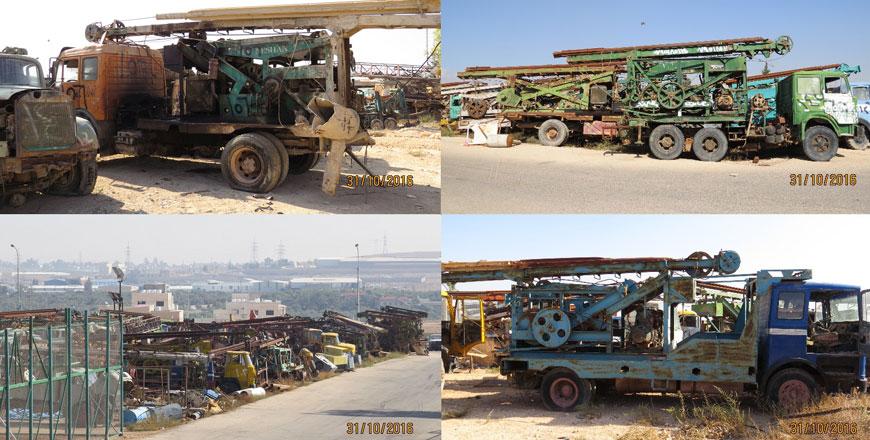You are here
Satellite remote sensing uncovers violations on underground water resources
By Hana Namrouqa - Nov 16,2014 - Last updated at Nov 16,2014
AMMAN — Satellite remote sensing of aquifers in Mafraq Governorate’s Ramtha District has uncovered “startling” results on the magnitude of violations on underground water resources, according to government officials.
Lands planted with irrigated crops in Ramtha District, around 80km northeast of Amman, are more than double the estimated area, while the water pumped from wells is more than triple the allowed amounts, according to results of the project, which was supported by the World Bank and implemented by the Water Ministry in cooperation with the US National Aeronautics and Space Administration between December 2013 and August 2014.
The ministry’s surveys indicate that there are 21,000 dunums of lands planted with irrigated crops in Ramtha, while the estimated water consumption from licensed wells in the area is 12 million cubic metres (mcm), Water Minister Hazem Nasser said in a statement e-mailed to The Jordan Times.
The minister indicated that satellite remote sensing, part of a project to improve water management, showed that there are actually 51,000 dunums planted with irrigated crops in Ramtha District, while the water extraction from licensed wells stood at 36mcm per year.
Nasser added that the technology showed that data about the type of planted crops in Ramtha and the amount of pumped water is inaccurate.
“The satellite remote sensing uncovered large and clear violations on underground water resources… and detected crops that are illegal for the area, such as potato, tomato, zucchini, eggplant and lettuce.”
Underscoring that the ministry is using satellite remote sensing to protect water resources and end ongoing violations, the minister said a plan will be prepared on the distribution of lands planted with irrigated crops in Jordan.
Meanwhile, Water Ministry Spokesperson Omar Salameh said the advanced technique will be applied across the country.
“The project started in the Ramtha aquifer. The ministry plans to use satellite remote sensing to detect violations in all of the country’s aquifers,” Salameh told The Jordan Times on Sunday.
During a meeting with heads of the country’s political parties on Saturday, Nasser said satellite remote sensing helped the ministry uncover the actual number of illegal wells in the country, noting that another 500 illegal wells were discovered.
The ministry banned the drilling of wells in 1997 to limit random pumping of water and preserve aquifers from depletion and salinity.
Nasser said at the meeting that the country’s remaining aquifers will dry up with a few years due to random pumping and violations on underground water resources, unless strict measures are taken.
Related Articles
AMMAN — Around 110 million cubic metres (mcm) of water have been saved since authorities launched a national crackdown on water theft in 201
AMMAN — The Ministry of Water and Irrigation on Thursday said that it had uncovered a violation on a water main in Muwaqqar area, which was
AMMAN — Three years after the government started removing violations on the water network, more than 26,000 illegal fixtures on water mains















